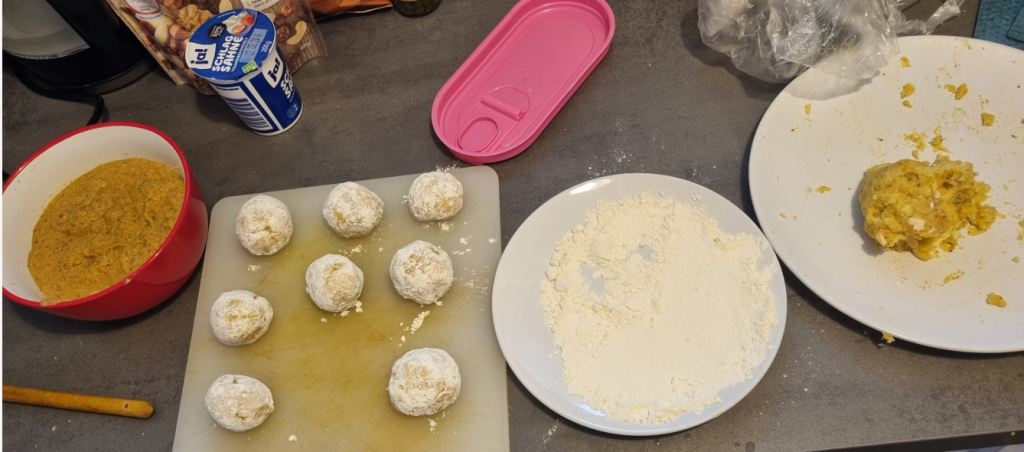A.k.a rolled croissant dough with Cardamom cream. Nice video.
Mistakes:
- I should have used my croissant recipe for the dough and the rest from this video.
Ingredients for 8 rolls/snails aprox.
– 250g wheatflour (12,5g protein)
– 125g whole milk
– 1/4 medium whole eggs
– 16g sourdough levain (at peak)
– 3.7g fresh yeast / 2g dried yeast
– 27.5g sugar
– 6.25g salt
*Try to keep all ingredients as cold as possible
—
25g butterblock
—
For the remonce creme
45g sugar
45g butter (room temperature!!!)
2.5g cardamon seeds
5g flour (important for not leaking)
For the syrup
– 30g water
– 30g sugar
– 1 cardamon pods
– 1 star anise
Mix everything and boil for 5 minutes.
Process:
Mix all wet ingredients + yest + flour + salt + sugar + mix all
Knead until you have a elastic/strongh dough and no very sticky. The video uses a machine and my dough after a long time never got to that consistency but I thought it was good enough and put it into the plastic container and then rest in the fridge. For 1 or 2 days. Mine was 1 day.
With a rolling pin, flat your butterblock, keep it cold
With a rolling pin, flat your dough, use a bit of flour as non-stick.
Put the butterblock in the middle and fold it with the dough.
Cut the sides to release the tension of the dough (I forgot it each time…) each time you make a fold
Do two folds like the croissants. Put the dough in the fridge for 30-45 minutes
Make another fold and spread the dough as a thin layer: 3mm aprox?
Make the Cardamom cream: Mix butter, sugar, flour and cardamom.
Spread the cream over the whole surface of the dough.
Roll the dough like a giant cigar. You can put the dough back in the fridge to continue next day (I did that)
Cut each roll: 4cm thick / 110g aprox
Put then in a tray with baking paper / or spread some flour over the tray.
Let is proof for 3-4 hours
Pre-heat oven at 190C. Bake for 18m or until brown/golden
Apply syrup immediately after taking the rolls out of the oven
Before oven:

After baking! (and applied syrup immediately for the shiny touch!)

Although It was quite far from the video… it was actually tasty! As mentioned earlier, I need to try with my croissant dough recipe, I think it would be much better.

